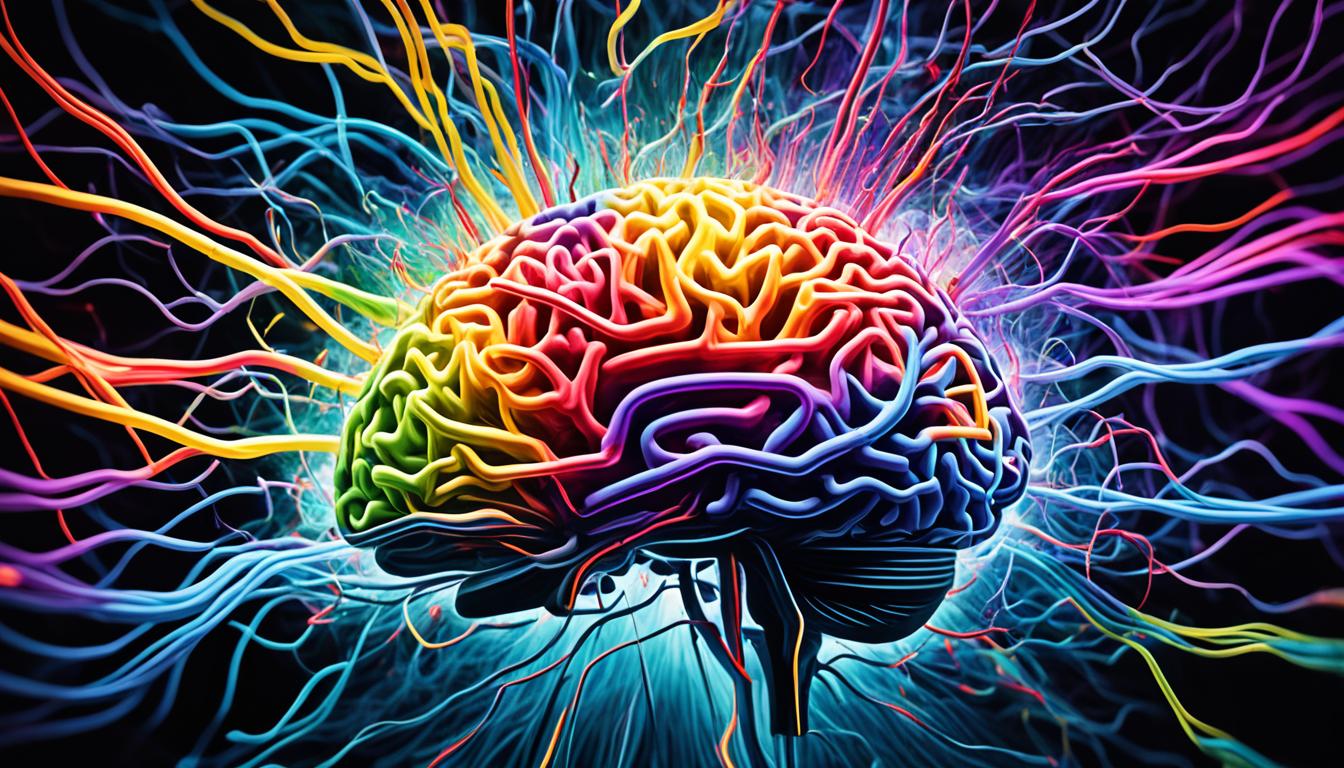Temporal lobe seizures, or temporal lobe epilepsy, start in the brain’s temporal lobes. These areas help us feel different emotions and remember things in the short term. Seizures in this part of the brain can cause feelings of joy, deja vu, or fear.
Some people with these seizures stay aware of what’s happening. But they might act like they’re absent or not pay attention. It can be hard to diagnose these seizures because the signs can be so different in each person.
The causes of temporal lobe seizures are not always clear. They could be because of head injuries, infections, brain scarring, and more. The unusual brain activity that happens because of these issues can lead to seizures.
Stem cell therapy is a new hope for treating these seizures. Doctors are looking into using stem cells to help control seizures better and make them happen less often. This treatment could be a big step forward, but we need more studies to be sure it’s safe and works well.
Key Takeaways:
- Temporal lobe seizures start in a specific part of the brain and cause strange feelings.
- Some people are aware during seizures, while others seem awake but not really there.
- They can happen because of head injuries, infections, and other brain problems.
- Stem cell therapy could be a good way to treat these seizures, but we need more information.
- Getting the right diagnosis is very important for managing temporal lobe seizure disease well.
Symptoms of Temporal Lobe Seizures
Temporal lobe seizures show many symptoms. Before a seizure, some people feel an unusual aura. This acts as a warning sign but not everyone gets auras. If they do, they may not always remember them. An aura can feel like sudden fear or joy, deja vu, odd smells, tastes, or a rising belly feeling like on a roller coaster.
Sometimes, these seizures lead to focal seizures with impaired awareness. People might not notice their surroundings well, or lose consciousness. They could stare, smack their lips, or move their fingers repeatedly.
Remember, not all temporal lobe seizures look alike. People might only have minor partial seizures. Others might act very differently during complex partial seizures.
If you see these signs in yourself or someone else, it’s important to see a doctor. They can help with exact diagnosis and treatment.
Causes and Complications of Temporal Lobe Seizures
The exact reason behind temporal lobe seizures is often a mystery. However, they can be linked to many causes. These may include:
- Traumatic brain injury, like hits to the head or concussions
- Infections such as encephalitis or meningitis
- Scars in the temporal lobe known as gliosis
- Malformed blood vessels in the brain
- Strokes
- Brain tumors
- Genetic disorders
These reasons can lead to unusual electrical patterns in the brain, causing seizures.
Hippocampus and Memory Problems
The hippocampus in the temporal lobe is vital for memory. When seizures occur here, memory can suffer. This disrupts how the hippocampus usually works and affects memory.
Complications and Associated Conditions
Temporal lobe seizures can bring many complications and other health issues. These might include problems with how the brain works, mood changes, and different behavior. They can also make accidents more likely.
| Complication/Condition | Description |
|---|---|
| Cognitive Impairments | Difficulty remembering, paying attention, or with language |
| Mood Disturbances | Feelings of being sad, anxious, or sudden mood changes |
| Behavioral Changes | Becoming more aggressive, acting without thinking, or personality changes |
| Accidents/Injuries | Times when they may fall, get burned, or hurt during a seizure |
Some people with these seizures might face problems from epilepsy surgery. This surgery is for those whose seizures medicines cannot control.
It’s key to understand the causes and issues with temporal lobe seizures. Doctors use a range of tests to find the root cause and choose the best way to treat them. Tests include a medical background, physical checks, and brain scans.
Stem Cell Therapy and Conclusion
Stem cell therapy is showing promise in treating various neurological conditions, such as temporal lobe seizures. Studies on animals found that it can help reduce seizures after a long episode called status epilepticus. This is a big step in treating these conditions.
The safety and success of stem cell therapy for human temporal lobe seizures is not yet fully proven. But the possibilities are exciting. This therapy uses stem cells to repair brain damage. This could mean better seizure control for many people.
Thailand has become a top choice for those interested in stem cell therapy. It is known for top-notch medical centers and research. The country follows strict rules, ensuring the therapy is both safe and effective.
In summary, stem cell therapy offers new hope for those with temporal lobe seizures. However, more studies are needed. The progress so far has the medical world excited. It could change how we treat these seizures and bring hope to many.

